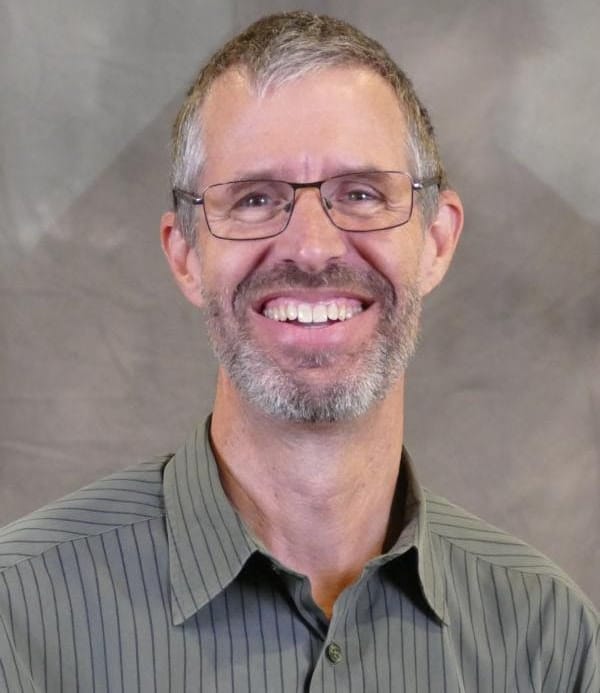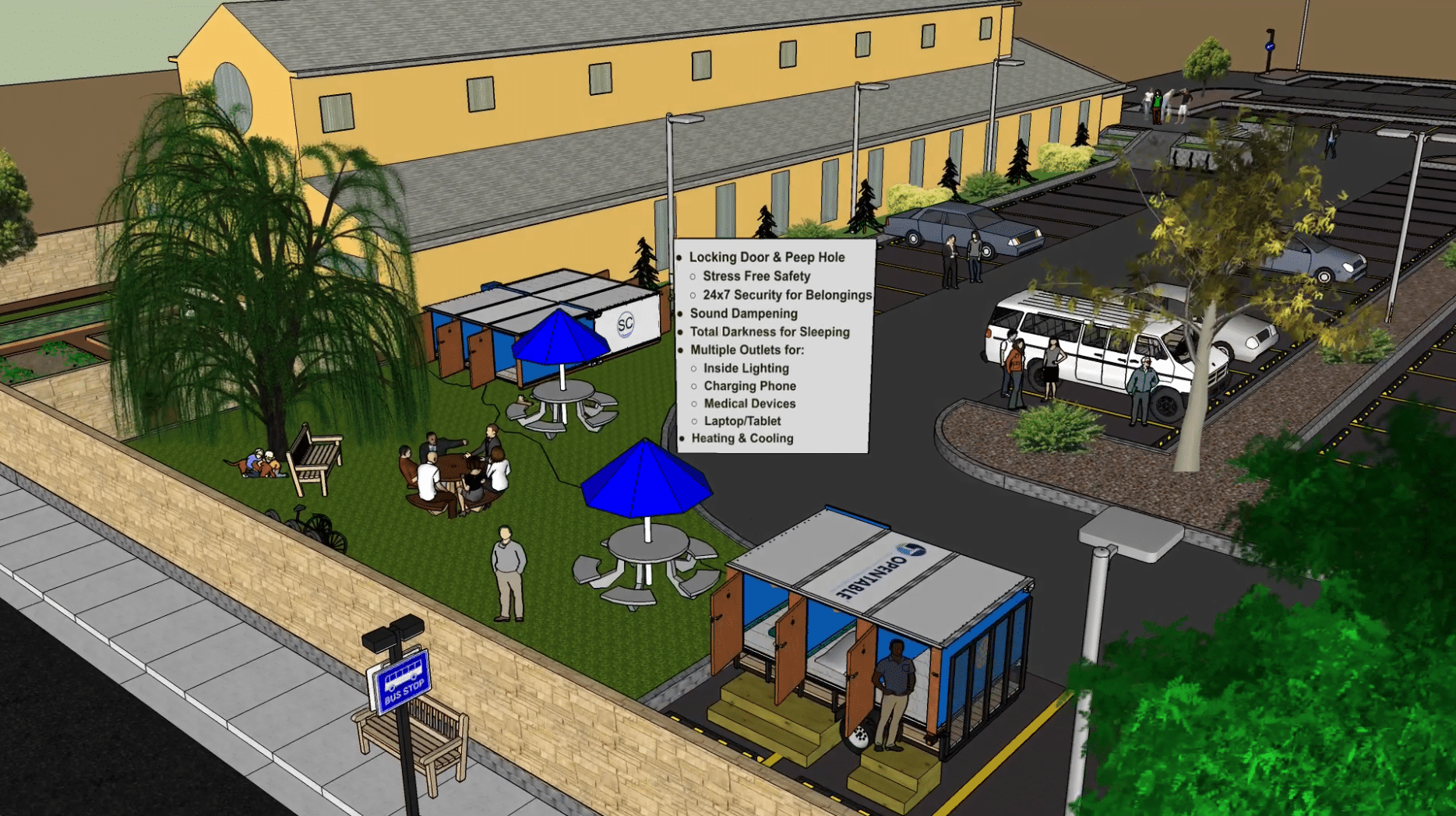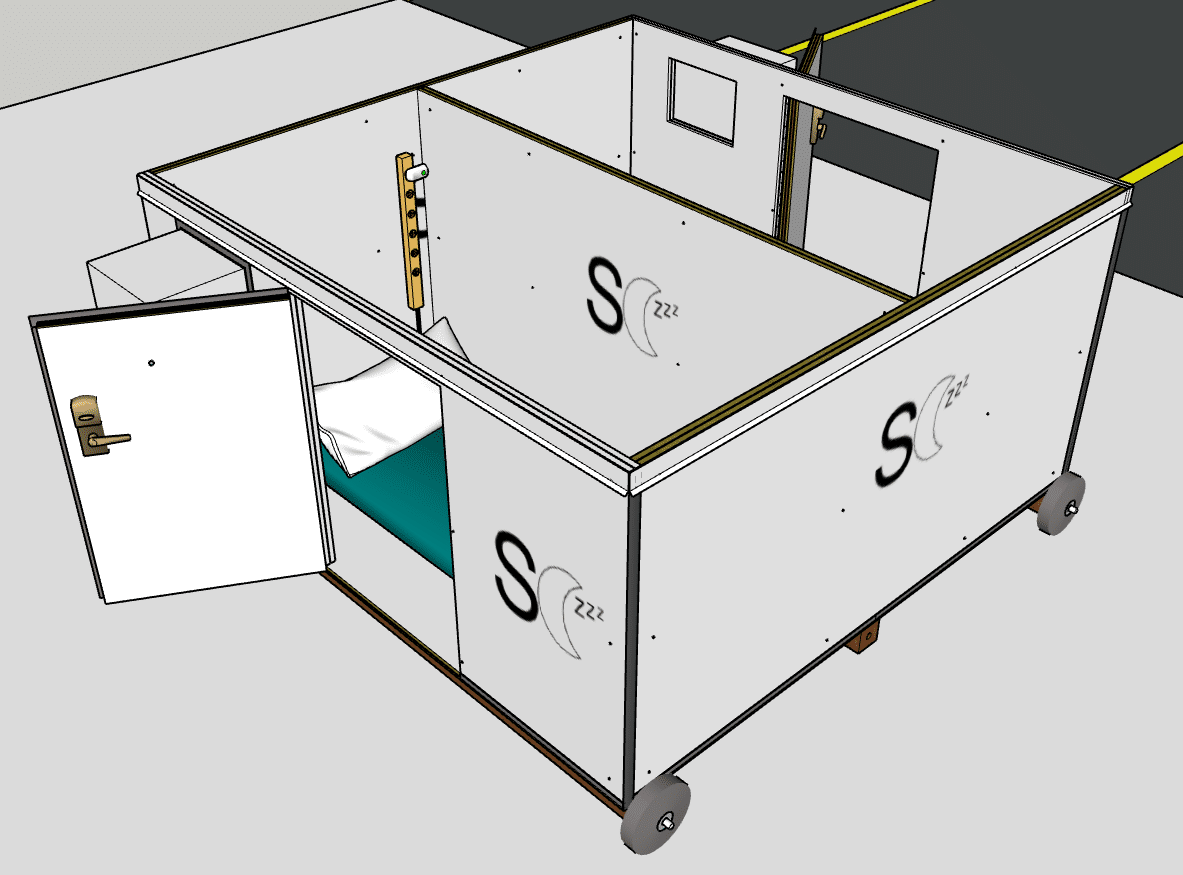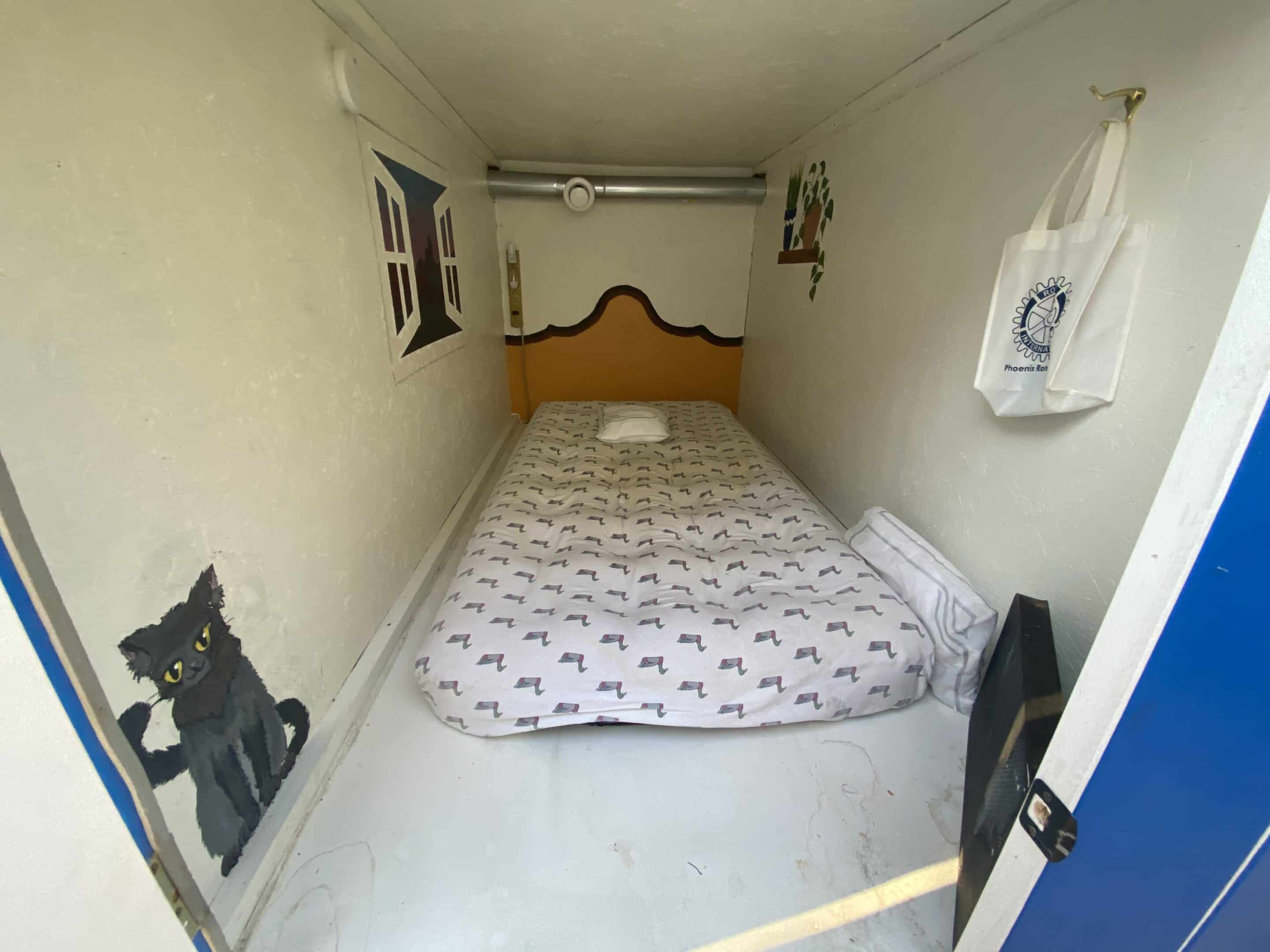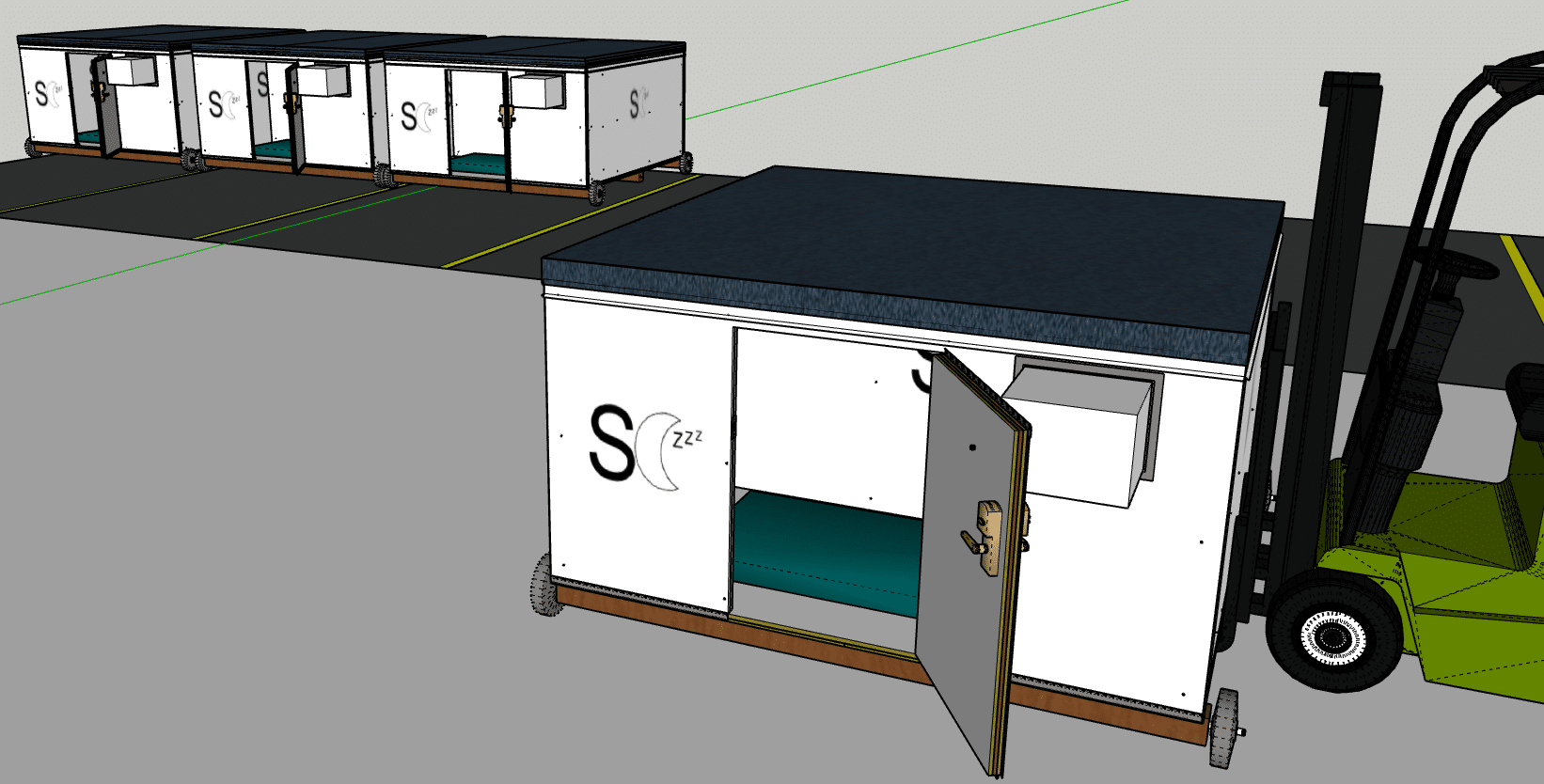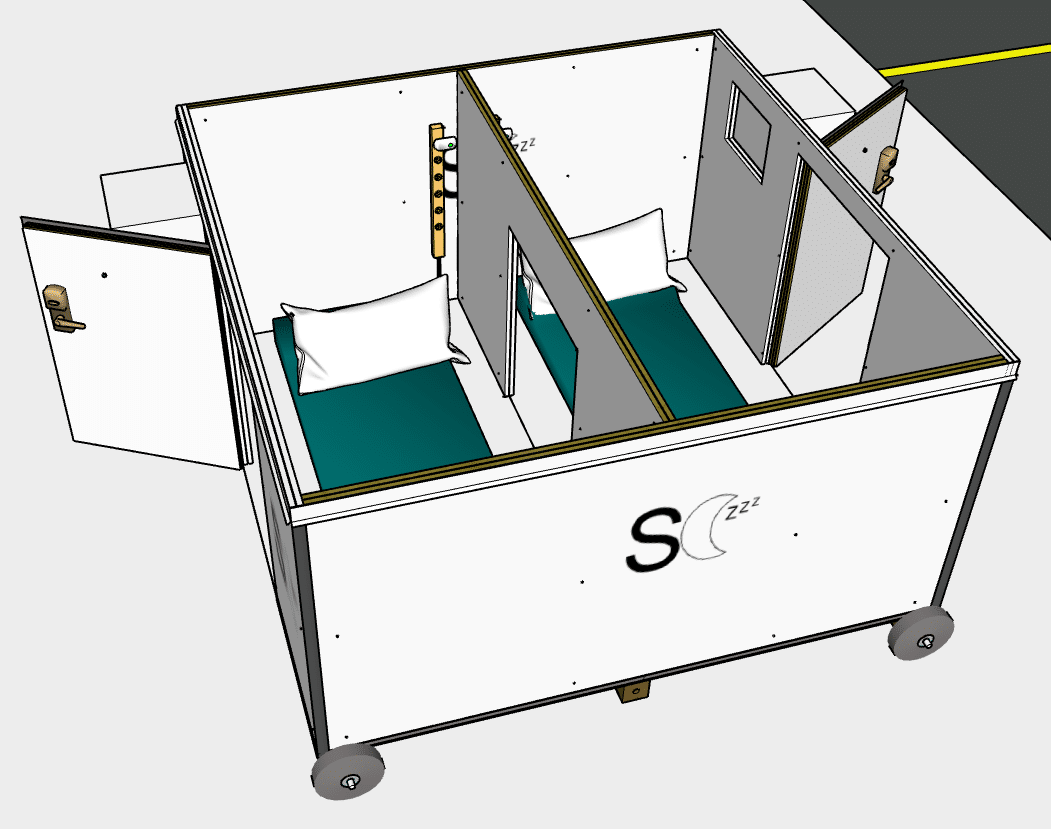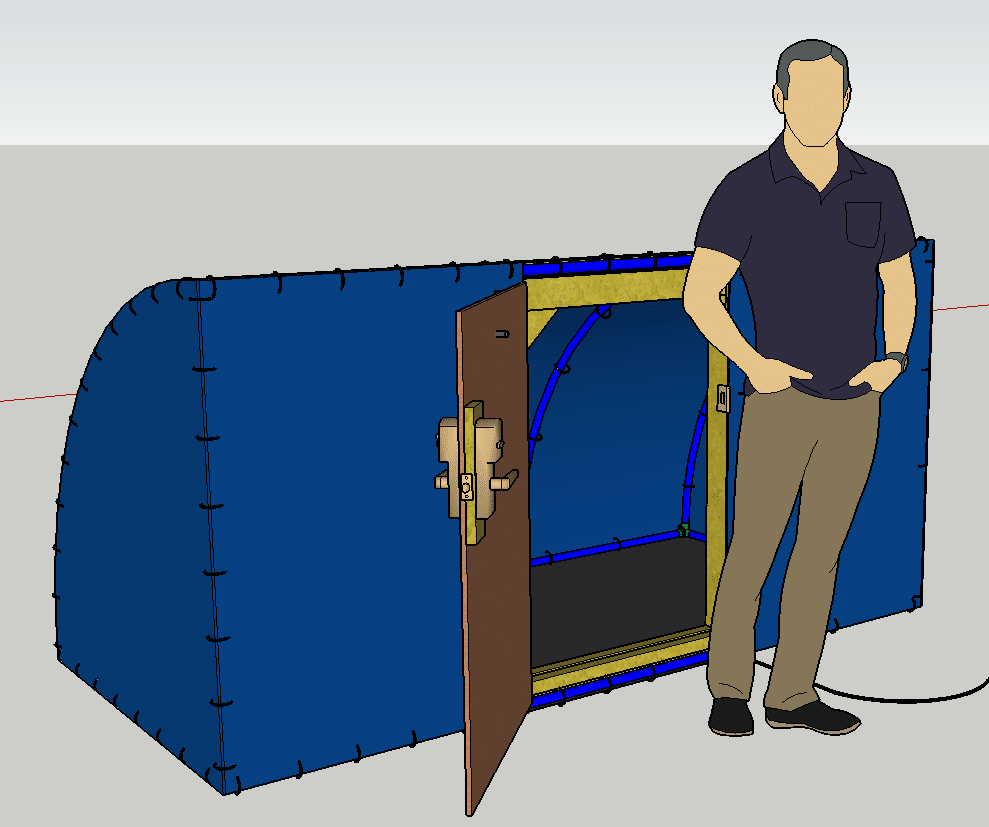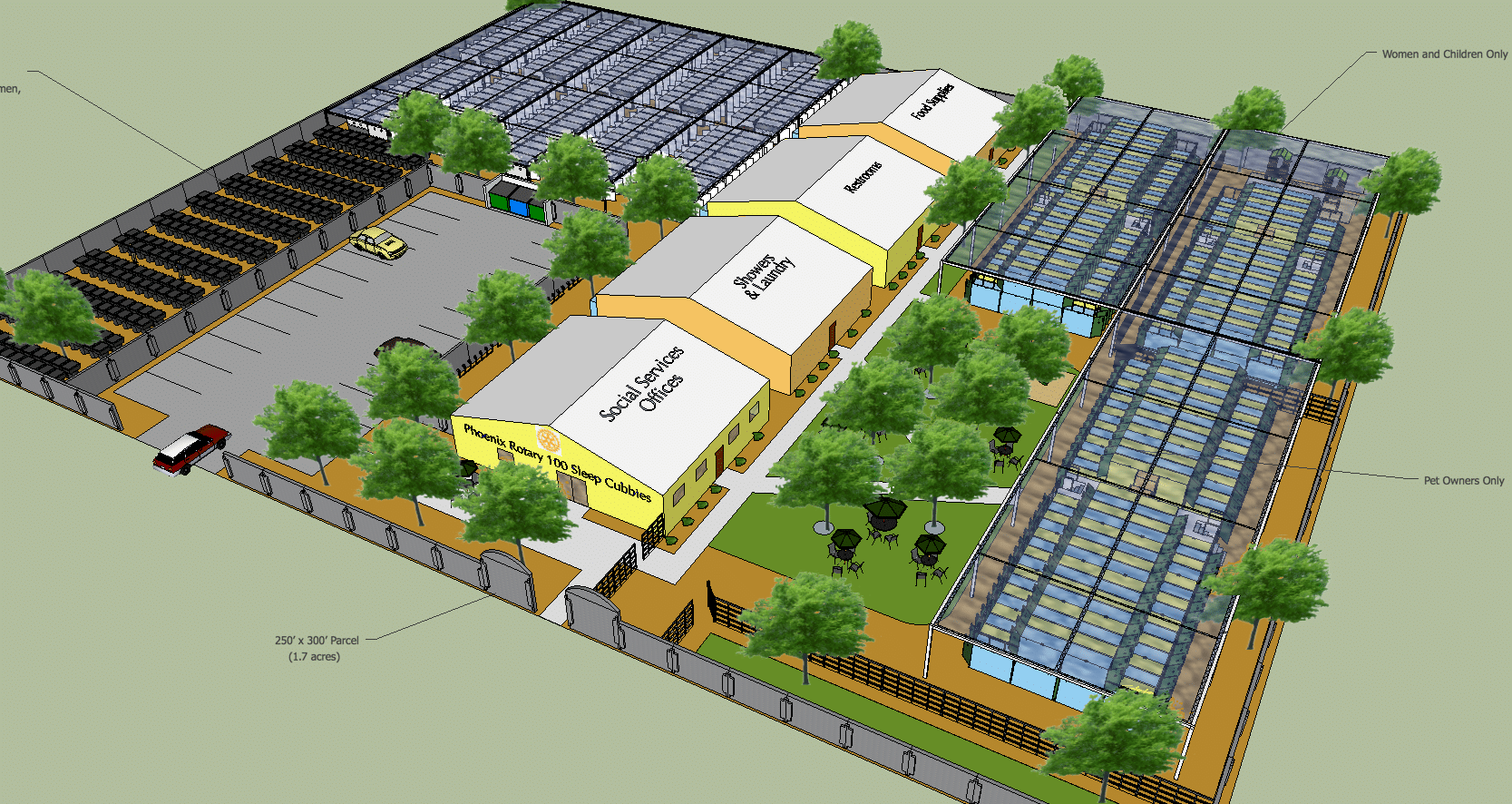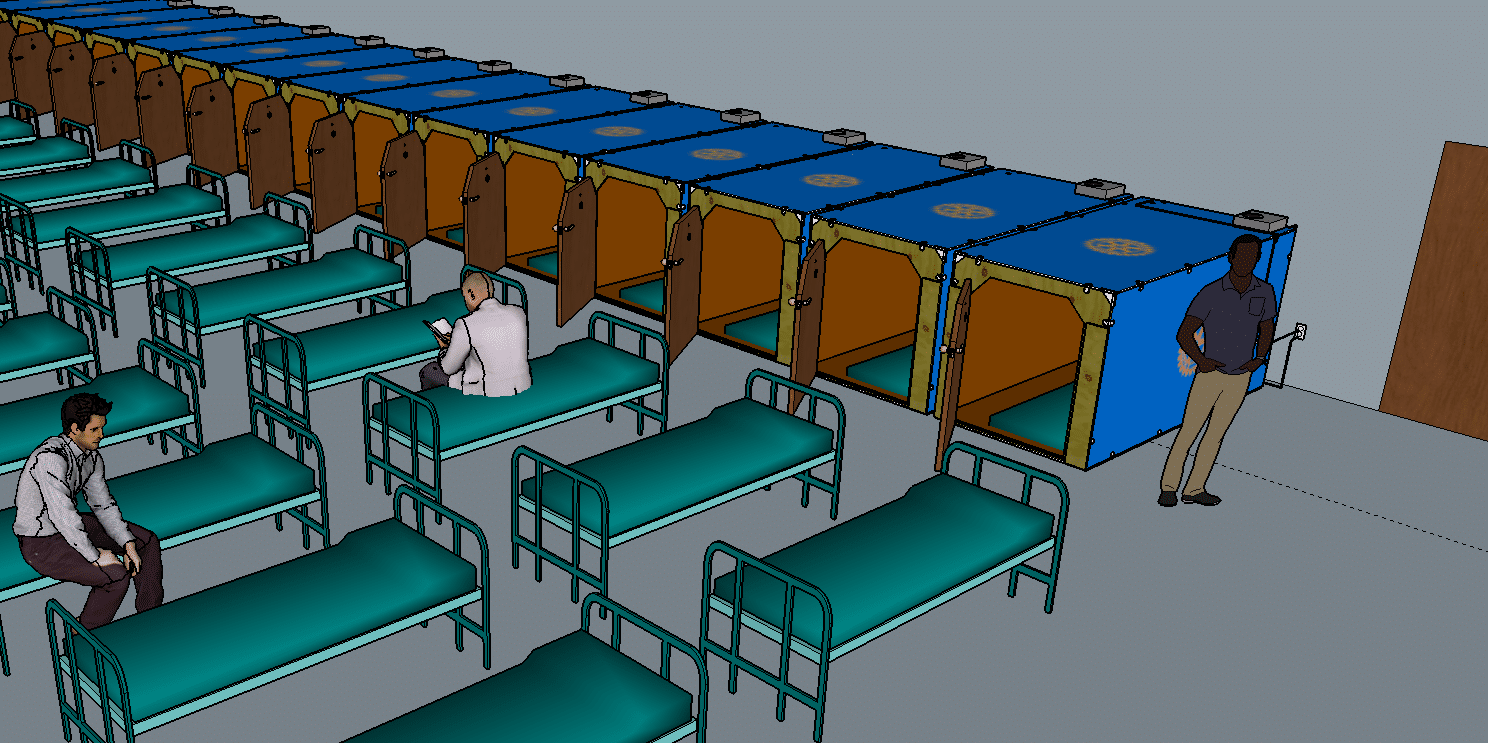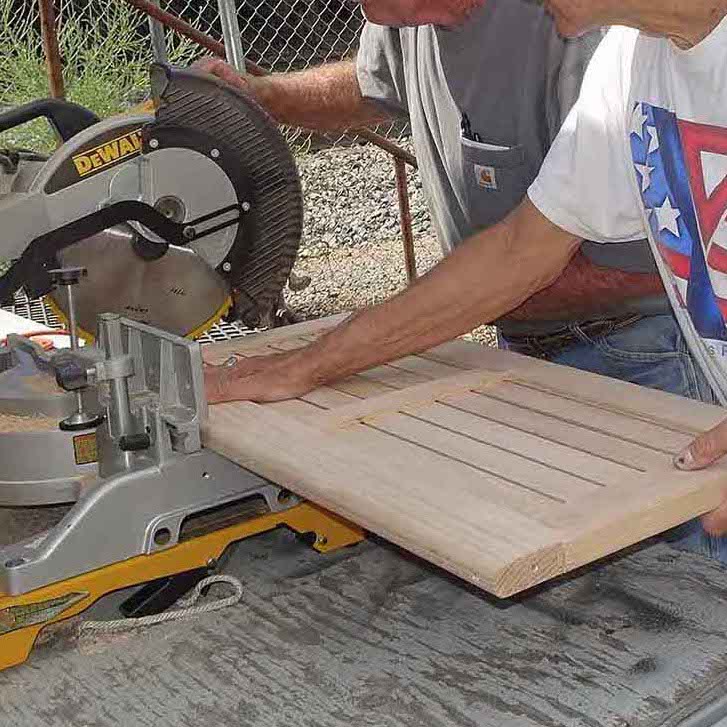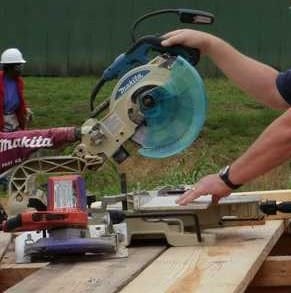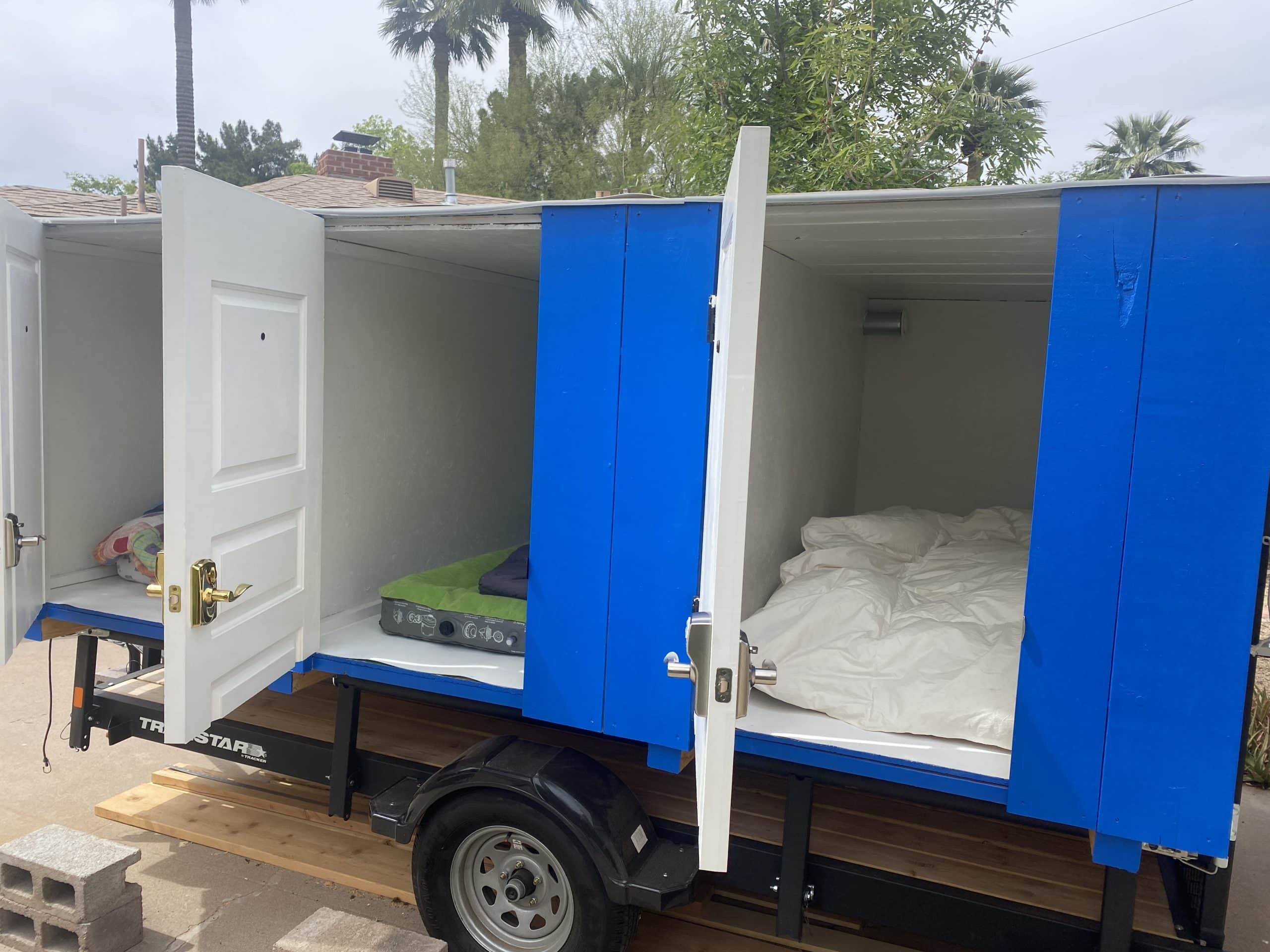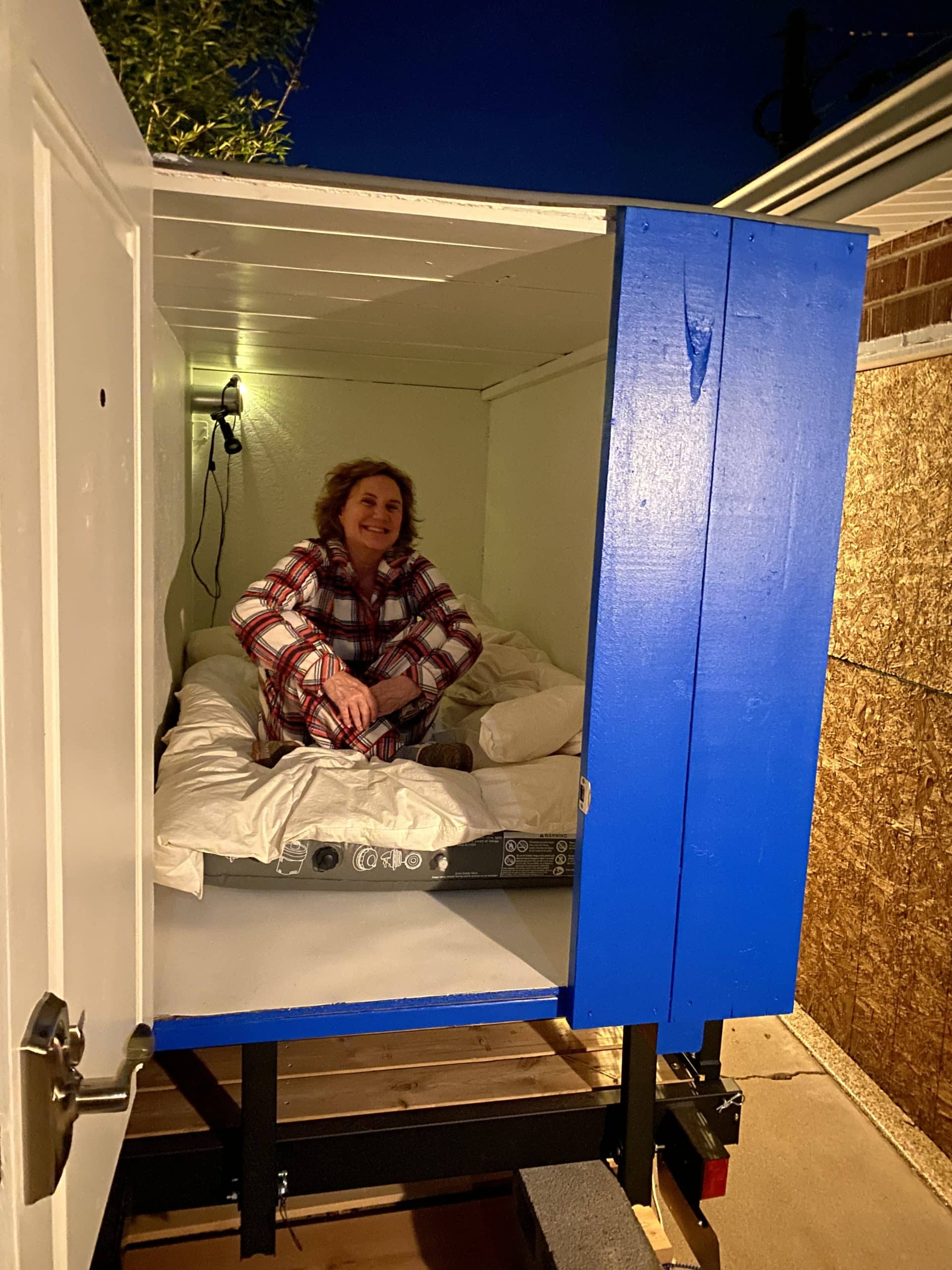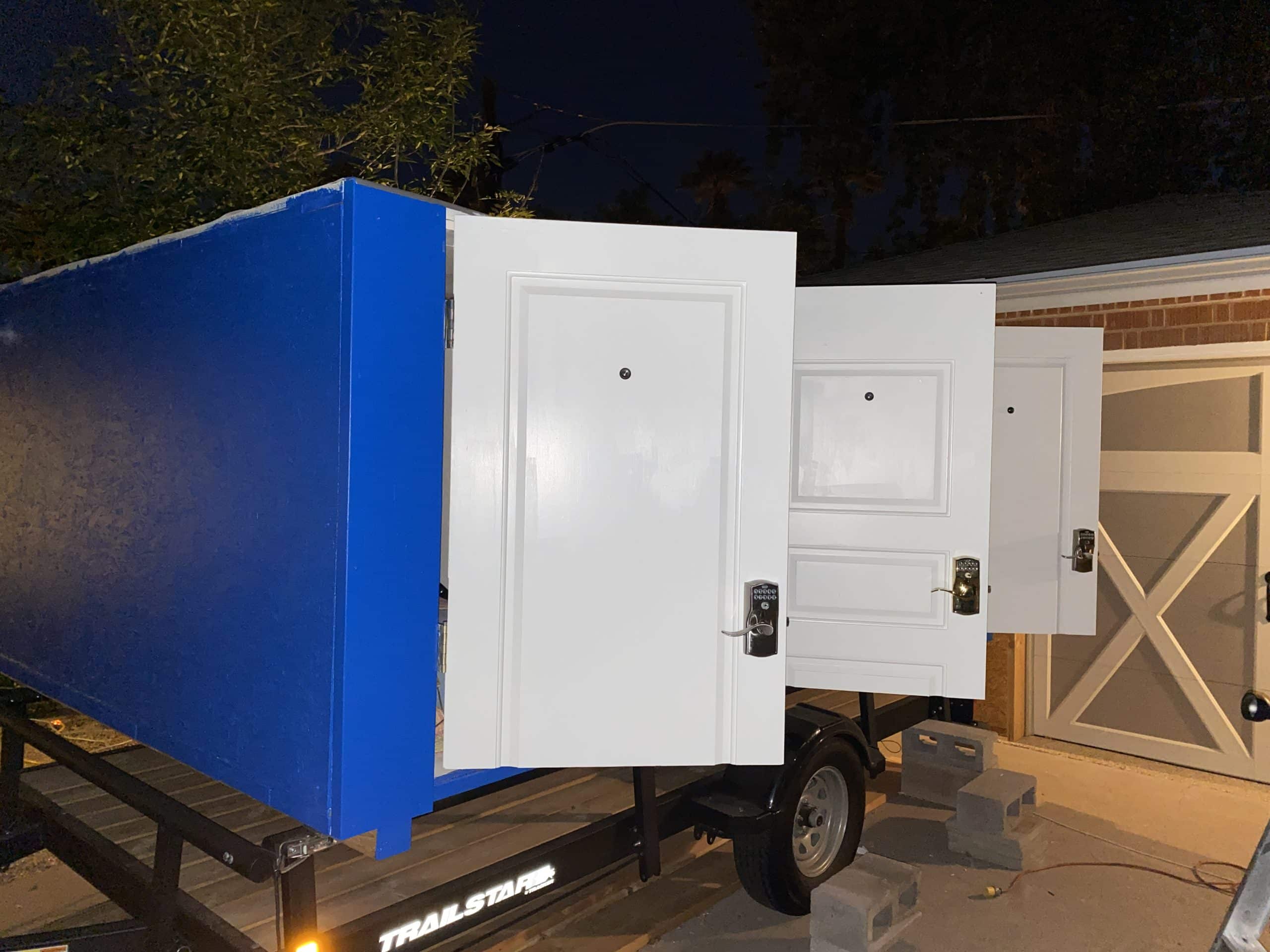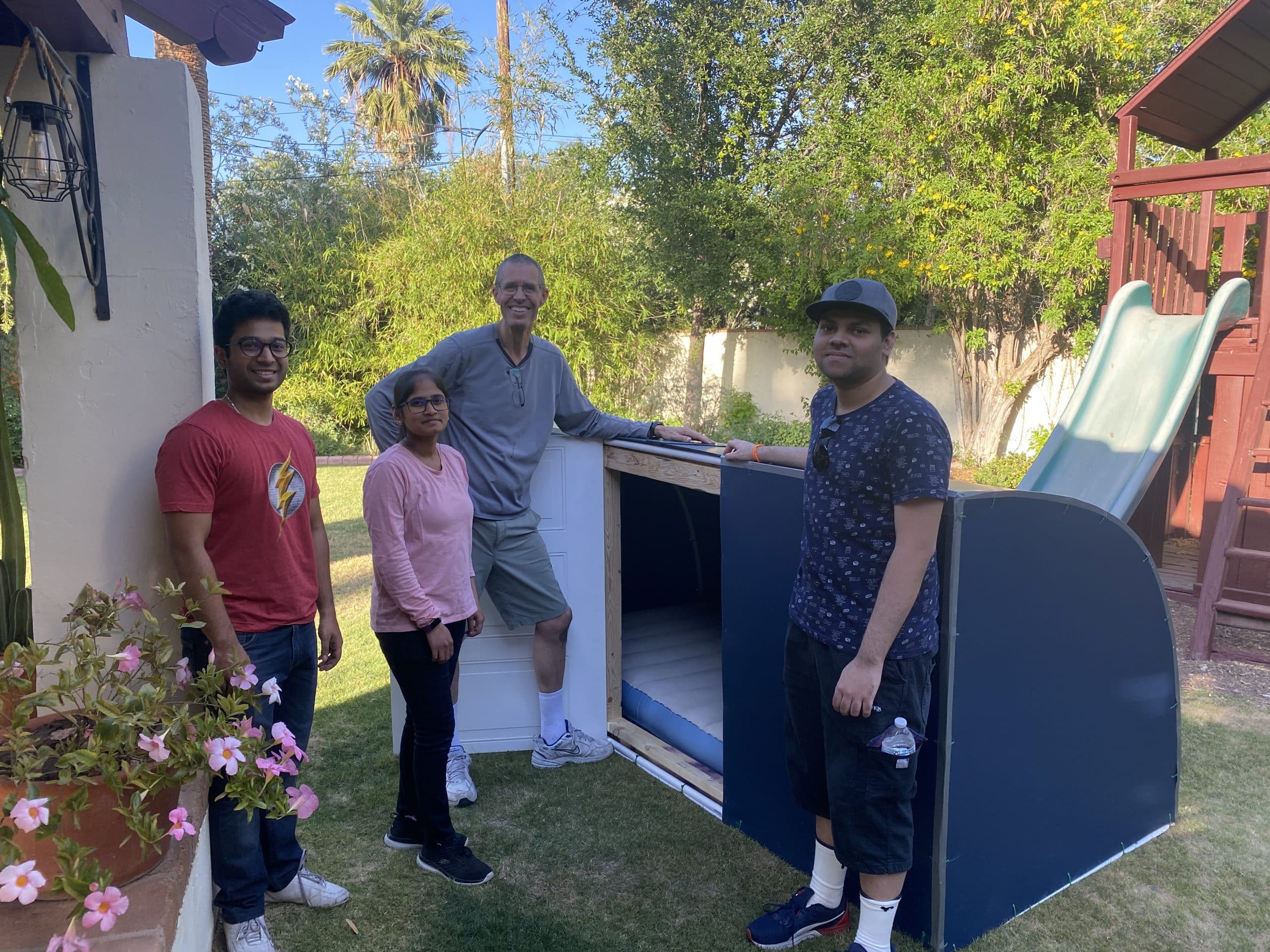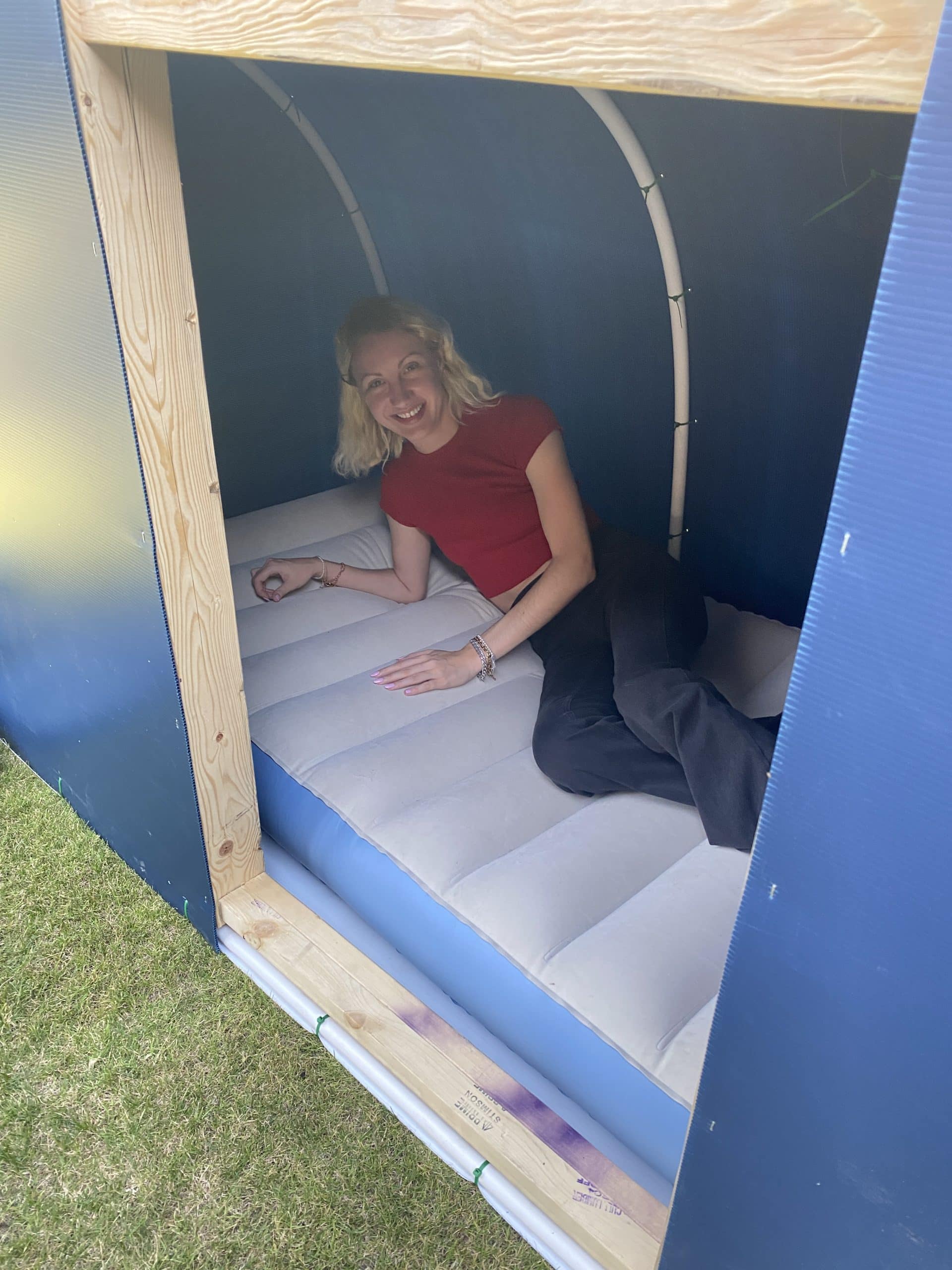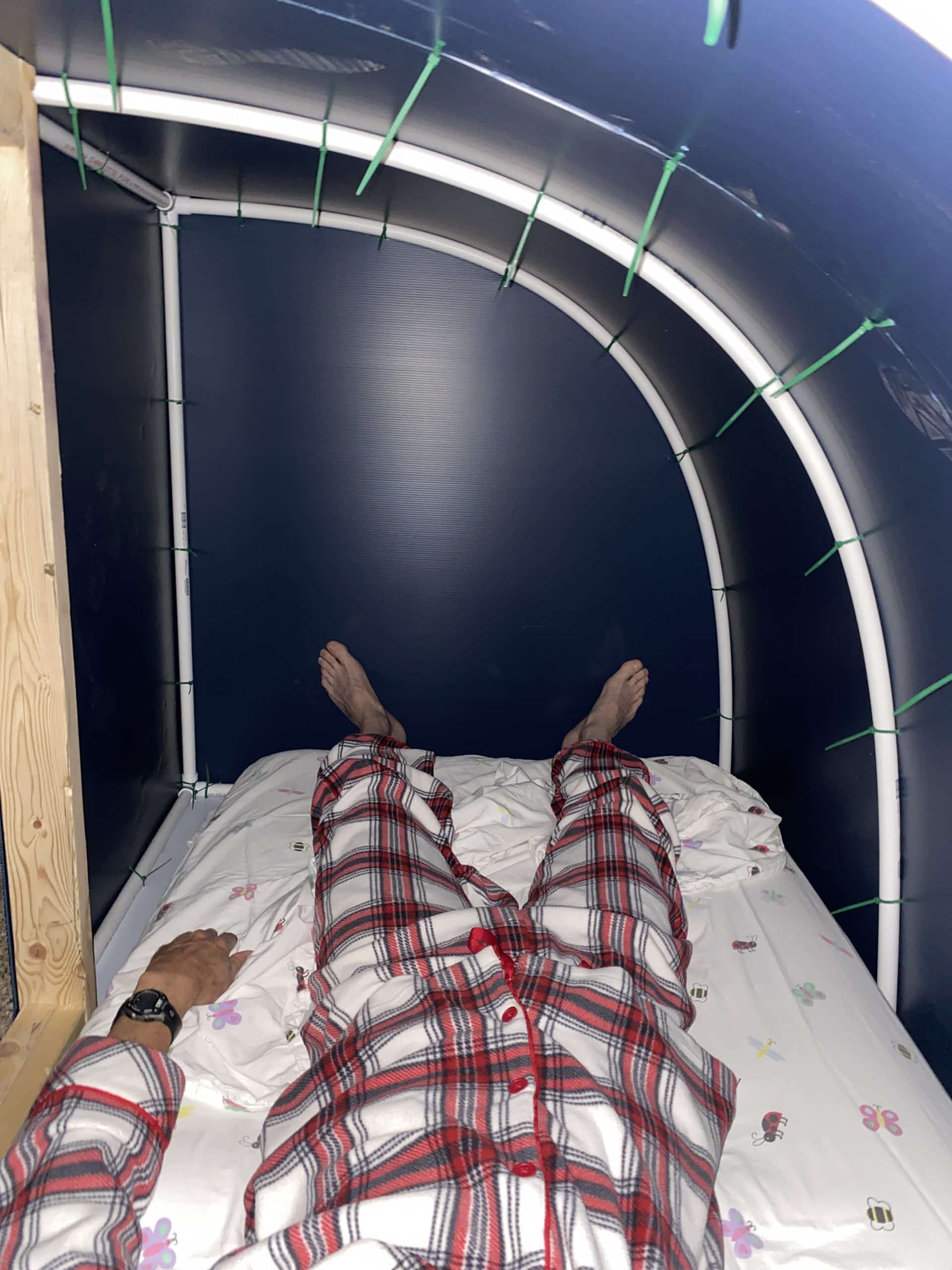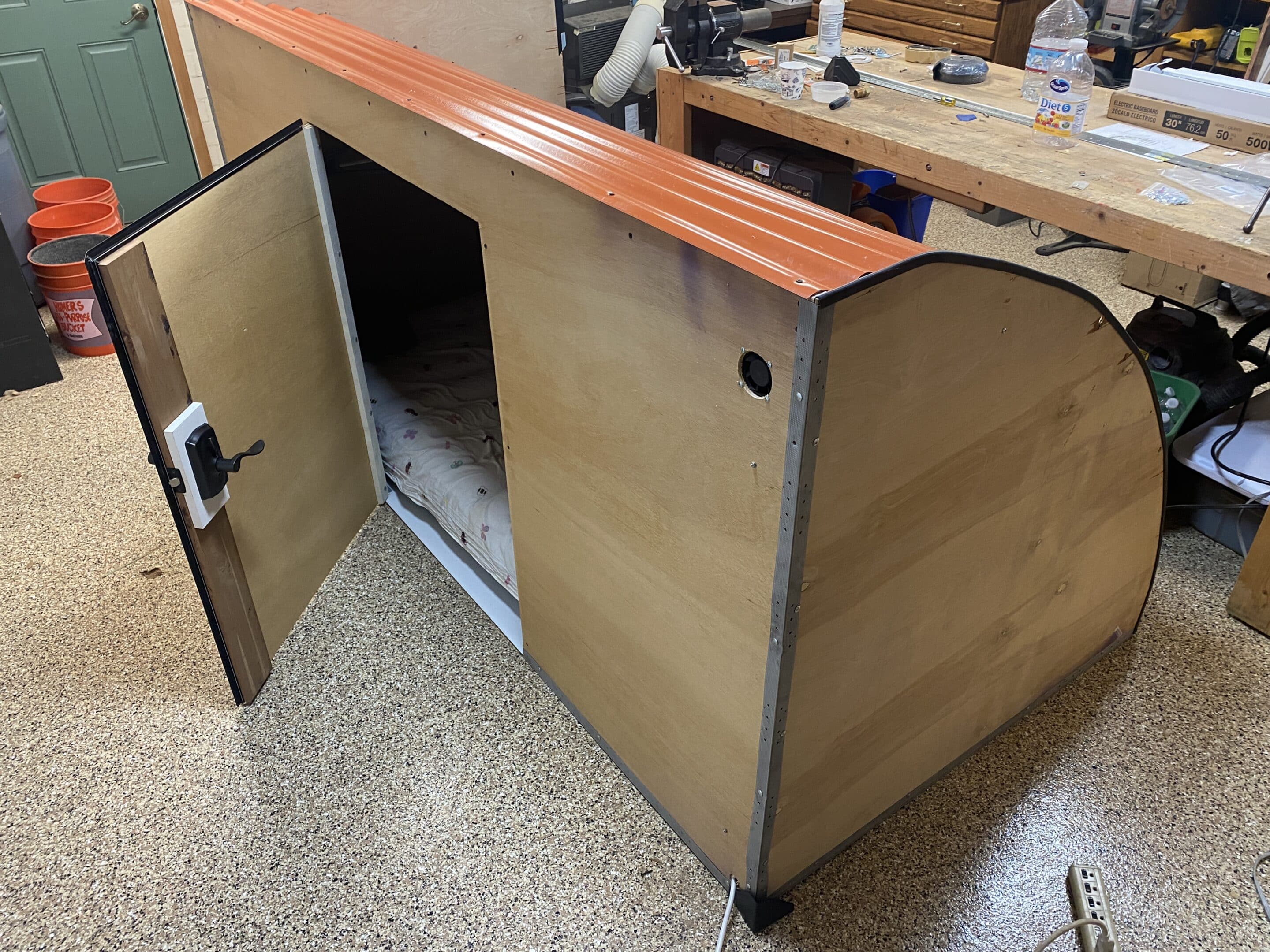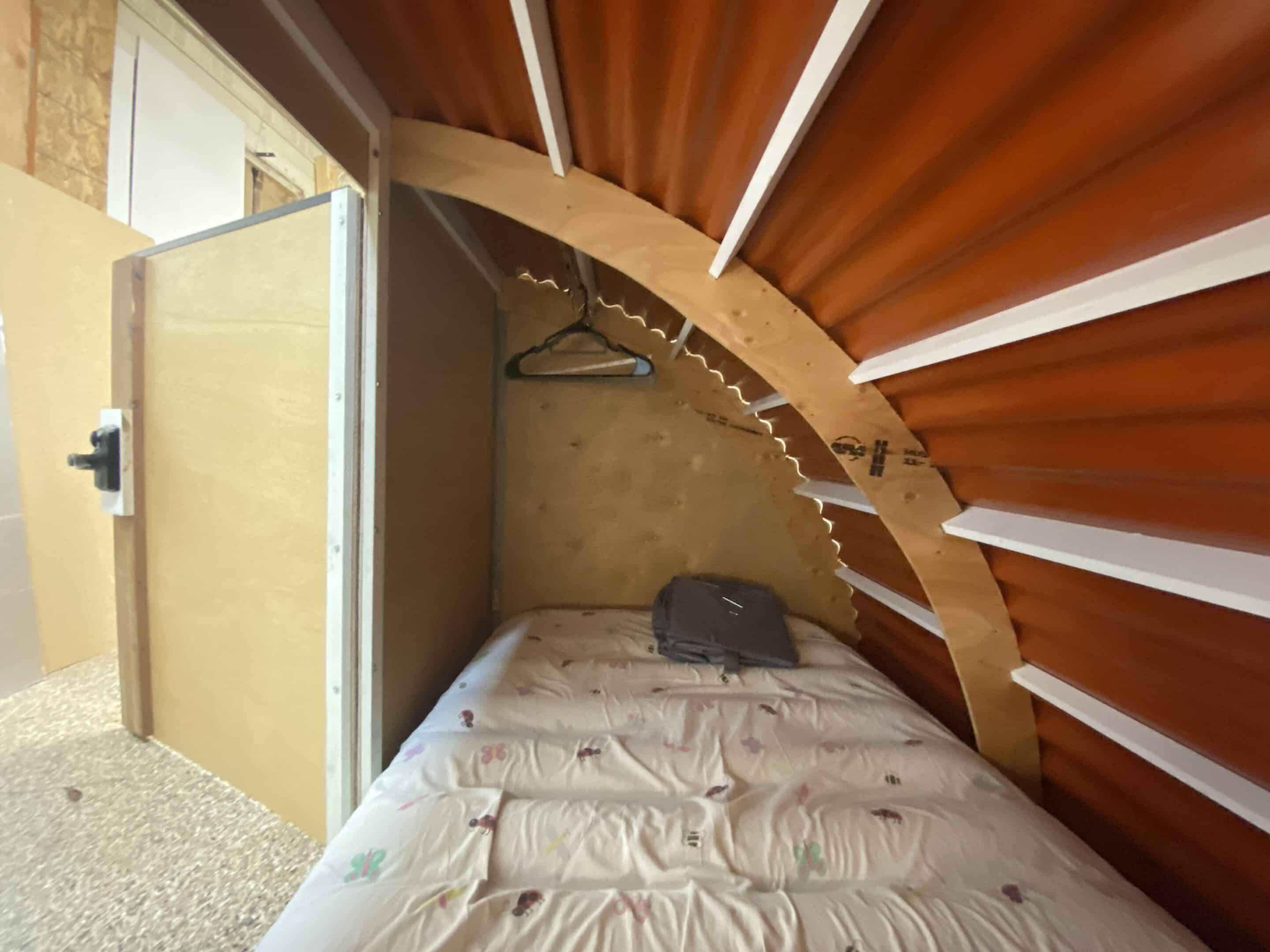
A New Way for People Experiencing Homelessness to Sleep Safely Off the Streets
“A few decent night’s sleep is crucial to being able to get back on your feet. Sleep deprivations is one of the most fundamental challenges for homelessness – as it is critical for both mental and physical health.”
– Jay Murphy
President of Phoenix Rotary 100
Our Project Mission
Our mission is to provide a unique temporary housing solution to those experiencing homelessness that focuses on the most important thing we do every day – sleeping. By doing so, we shift the focus directly to a fundamental cause of both mental illness and physical illness. Additionally, our preferred deployment strategy is to leverage relationships with churches who can provide the support services and compassion that are so greatly needed by this vulnerable population. There are 3 design features that are critical to success:
-
-
-
- A secured structure that protect the inhabitant and his/her belongings during the night while sleeping
- A secured structure that protects the inhabitant’s belongings during the day while tending to employment, health, or other needs.
- A support model that leverages hundreds of times more volunteers (i.e. from churches) than are available when support is only provided by government and a select few community organizations.
-
-
About Us
The project was initiated in 2022 by members of Phoenix Rotary 100 which was founded in 1914 as the 100th club to join Rotary. Through the years, Phoenix Rotary 100 has been at the forefront of community service in Phoenix and beyond, with a past and present membership list reading like a “Who’s Who” in Arizona’s history. Mayors, governors, U.S. senators and one Supreme Court Justice have all been a part of Phoenix Rotary 100.
Sleep Cubbies, Inc is a 501(c)(3) non-profit formed by members of Phoenix Rotary 100 that is tasked with exploring and promoting the Sleep Cubbie concept.
The 3 Key Problems for Homeless People
Getting a Decent Night’s Sleep
Personal
Safety
Feeling stressed when you are asleep because someone could sneak up on you, so you have to “sleep with one eye open”
Security for Belonging
Environmental Comfort
Loud noises, bright light and uncomfortable temperatures destroy the quality of sleep
Sleep Cubbies Turn a
Sleepless Night into a Peaceful Night
The “Sleep Cubbie Advantage”
Open Area Sleeping
Up to 100 people in a single area
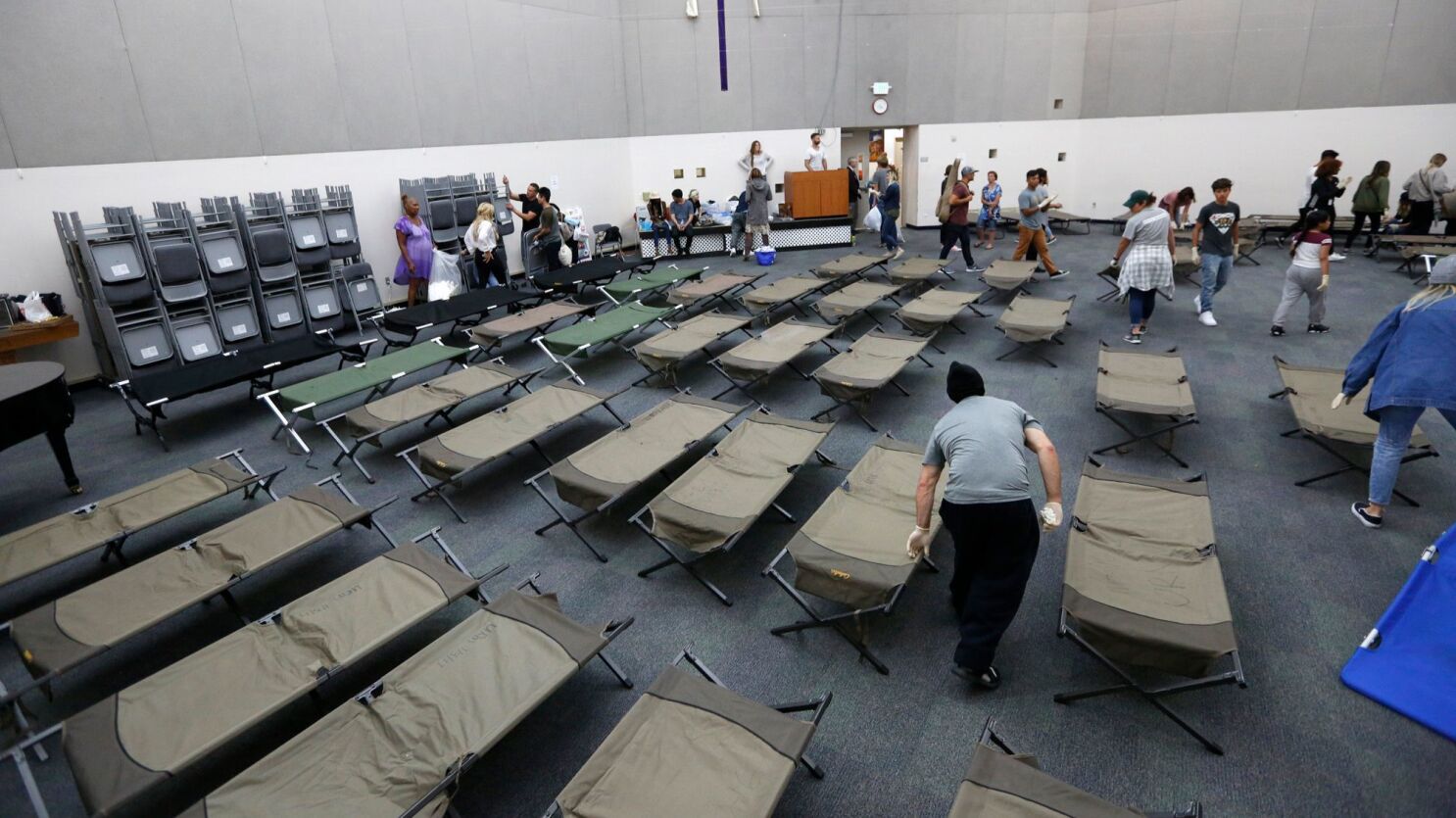
ⓧ No Personal Safety: People are free to roam and could harm you, keeping you on edge.
ⓧ No Possession Security: Your items are laying underneath you on the ground, free for the taking while you sleep.
ⓧ Limited Environmental Comfort: The facility is climate controlled, but you hear the snores, talking, coming and going of others, never letting you truly sleep. Some lights are always on, so it’s never completely dark.
VS
Sleep Cubbies
1 person per cubby or 1 couple per cubby
✔ Personal Safety: You have the peace of mind to know you are safe because your personal sleep cubby door is locked.
✔ Possession Security: All your belongings are safe in your locked personal sleep cubby, whether you are there or not.
✔ Environment Comfort: You are in a quiet, climate controlled space that can be pitch dark when you want it to be.
The Solution
The Basics
Sleep Cubbies are each about 4 feet wide, 4 feet tall, and 8 feet long. The walls, floors, and ceiling all provide great sound suppression. A combination lock door can only be opened by the client – but with the ability for a master key to be used by the church or other cubbie provider. Reprogramming the code when needed takes just seconds.
Inside
Sleep cubbies have air conditioning and heating, and an electrical 110V/USB power strip for charging the client’s phone/tablet, medical devices, alarm clock, etc.
Clients will receive a plug-in night light bright enough to read by, a washable sleeping pad and a pillow.
Modular, Portable
Outdoor sleep cubbies are assembled in modules of two. They will be delivered on a flat-bed trailer, unloaded with a fork lift, and have wheels for maneuvering into position.
There will be very little site preparation, as they have no plumbing and can be leveled with temporary supports underneath. Electrical will be provided via extension cord.
Flexibility
Cubbies back up to each other, so when a couple would like to share, the divider can be removed and turn it into a duplex!
Deployment Options
Site Option #1
Churches agree to take in from 1 to 10 individuals experiencing homelessness, placing sleep cubbies on a vacant portion of their property or in extra parking stalls.
Restrooms, kitchen facilities, and showers (if available) are provided by the church. Members of the church provide mentoring and assistance in re-establishing employment or housing or both.
If showers are not available, there are several mobile showering units that serve the community and can be brought onsite on a regular schedule.
Site Option #2
Lightweight, easily movable indoor sleep cubbies providing mostly security and safety result in a cost-effective solution within a church or similar facility. No heating or cooling is needed.
An entire congregation can actively set up and schedule services on a volunteer basis, thereby expanding the reach of the community many-fold. Guidance in this area can be provided by partner organizations experienced in this type of social work.
Site Option #3
Cubbies are cost effective when compared to other temporary emergency housing facilities (less than 1/10th of the cost). A Sleep Cubbies Campus is a high density design used to reduce land costs and provide showers, laundry, restrooms, food supplies and partner organizations who provide wrap-around services.
Such a deployment model will be considered after the church deployment model has been implemented.
Site Option #4
Existing shelters can supplement their facilities with an indoor version of the sleep cubbies, eliminating the extra expense of air conditioning and weatherproofing. This allows for a incrementally phased adoption program as funds and space are made available. The footprint is no bigger than individual cots as shown.
The added benefits to the clientele are: the security of their belongings, their personal safety, the soundproofing, and the privacy/darkness.
Approach to
Rolling Out Sleep Cubbies in Phoenix
1. Prototype
We have developed three prototypes and are working on a fourth. We could use your help!
2. Feedback
Clients at the Human Services Campus in downtown Phoenix and at churches around the valley will sleep in the cubbies and tell us what works and what doesn’t.
3. Production
Once we learn and develop best practices, we will promote third party production of as many units as Phoenix and the surrounding areas need. Time is of the essence.
Current Status
We have produced 4 designs to date (January 2024) and built the first three:
1. Triple Outdoor Cubbie – Plywood – Completed – Ready to be tested at an outdoor site (a church).
2. Single Indoor Cubbie – Plastic Proof of Concept – Completed – Not intended for deployment.
3. Single Indoor Cubbie – Wood – Completed – Ready to be tested in an indoor site.
4. Double Outdoor Cubbie – Melamine – Designed – Ready to be built.
For imagery and further description, please see below.
1. Triple Outdoor Cubbie
Plenty of room inside! Comfy, with a standard twin size mattress, power strip, air conditioning, heating.
This prototype resides on a trailer for easy transport during the testing phase, but can easily be lifted onto the ground with a fork lift.
Personal combination locks and peep holes. Great sound isolation.
2. Single Indoor Cubbie – Plastic
This is the “Cubby Crew” from ASU Engineering graduate students! Naga, Divya, and Murali have been working on a design and we all put it together in one day in the back yard. Go team!
This design is intended to be used indoors – say in a gymnasium, an industrial building, an existing shelter, a church, or wherever there are people willing to help guide individuals toward a better housing situation.
Plenty of room inside! Comfy, with a full size twin mattress, power strip, and locking door. 4’x4’x8′. Easy assembly. No air conditioning required indoors. Walls are made of coroplast.
3. Single Indoor Cubbie – Plywood
Designed by the “Cubby Crew” from ASU. Does a great job of addressing dificiencies in the plastic version. (#2)
This design includes a clothes rod and hanging shelves. Improved sturdy roof design. Small recirculation fan.
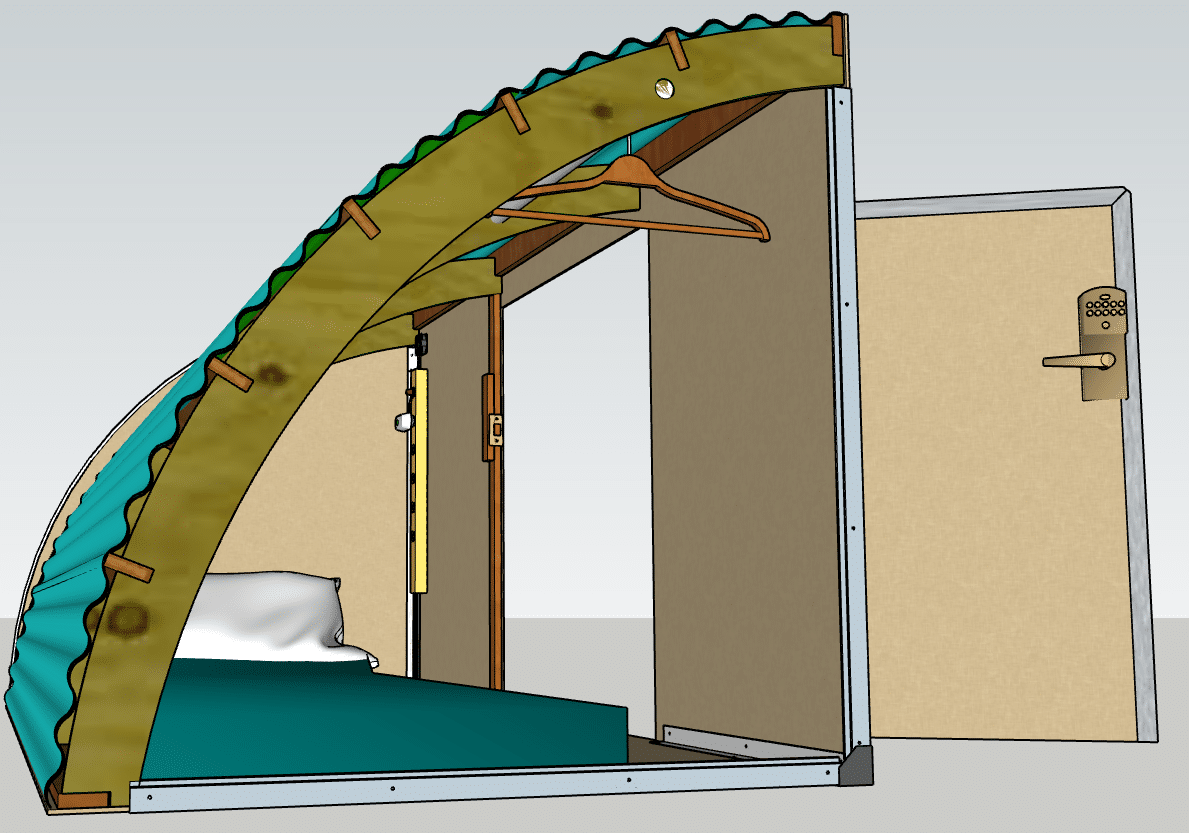
Very roomy. Power strip for six 120Volt devices + two USB.
4. Double Outdoor Cubbie
The latest design shown situated in a parking lot. Wheels provide a way to easily adjust positioning.
The Double Cubbie provides a more cost effective approach than the original Triple Cubbie. It includes individual air conditioning units and entrances on the sides – making it easier to get in and out.
Call to Action
We need your help!
Project Chair – We are seeking to find somebody who can step in and help coordinate the project.
Design Coordinator – Are you an Engineer or Architect? We could use your expertise.
Fundraising Coordinator – Once the prototypes have been built and tested, we will need to seek funding. We’d like to put together a funding plan in the meantime.
Building Coordinator – As we start ramping up production, we’ll need someone who can coordinate the building partners, acquisition of materials and labor, and drive the construction tasks. Thanks to Joe for stepping up!
Volunteer Coordinator – Volunteers are at the heart of any project. We wish to enlist volunteers in many organizations and make this a community-driven project. It began as a Rotary service project and grew into its own 501(c)3.
Communications Coordinator – As we move forward, we need somebody to help us communicate our project progress, develop our branding, and showcasing our achievements.
Compliance Coordinator – As with any project, we will need to work closely with regulatory agencies to maintain compliance. We need your expertise.
Questions or Suggestions
Jay Murphy
Past-President, Phoenix Rotary 100
Email or call Jay with Questions or Suggestions
cubbies@murphy.home.name
602-451-8506 cell (Please leave a voice message)

